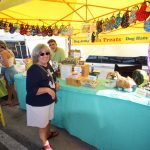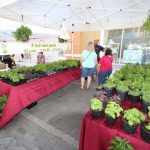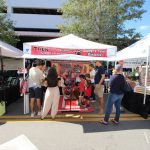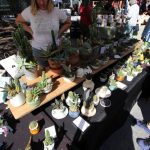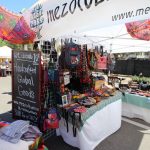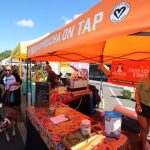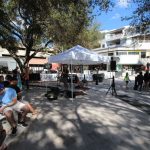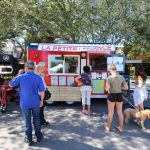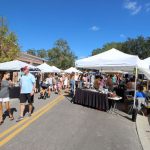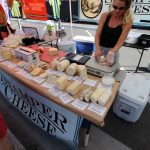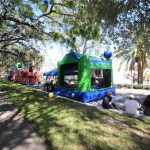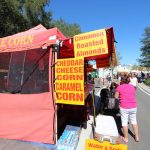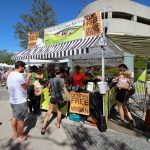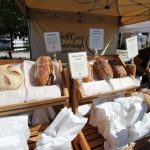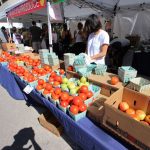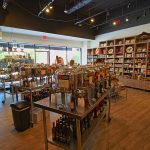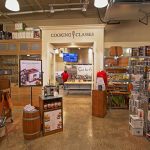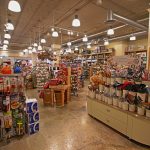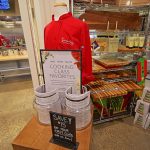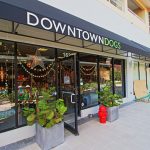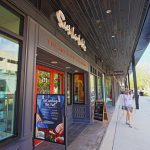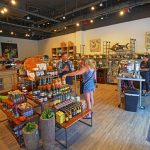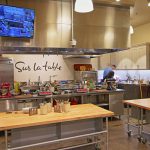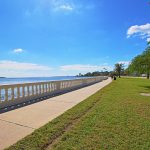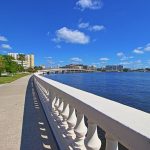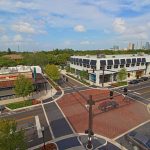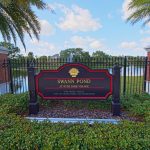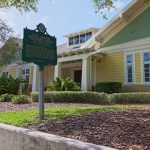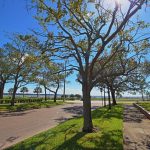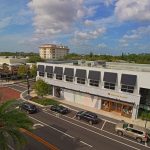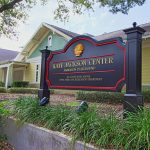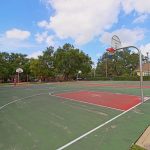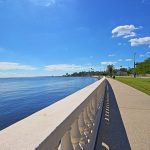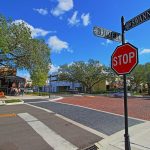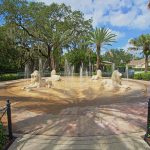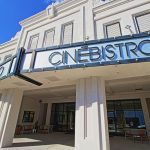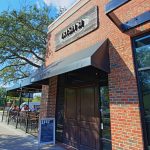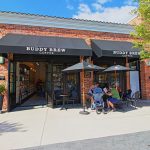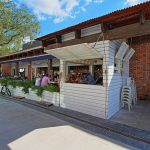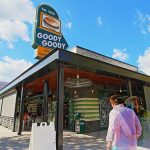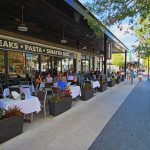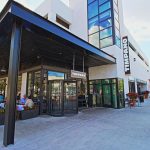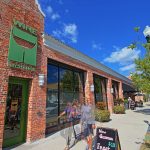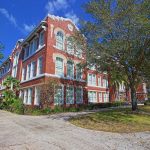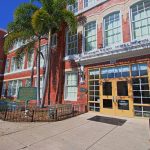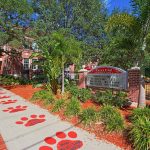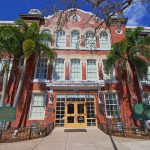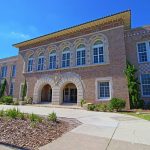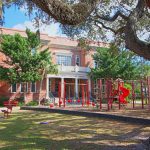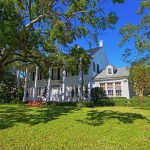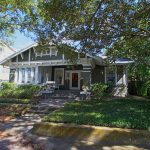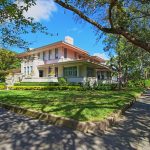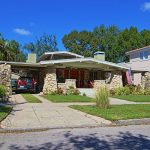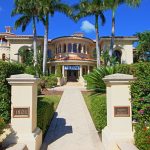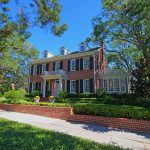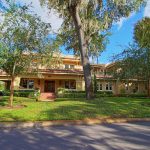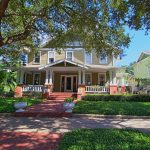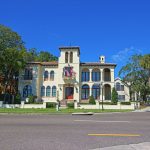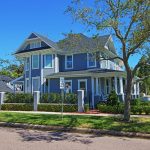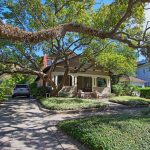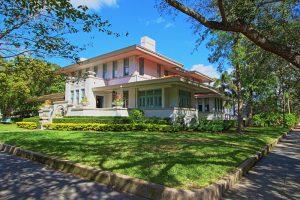Hyde Park: A Historic, Fashionable Neighborhood
The historic, Hyde Park is a fashionable neighborhood located south of downtown within walking distance to Tampa Bay. Hyde Park Village, otherwise known as the neighborhood hub, is a picturesque setting. Upscale, outdoor, retail shops and professional service boutiques, circle around the village’s magnificent fountain. Lip-smacking aromas fill the air from the several restaurants in the village each offering classic quality food with a creative, yet authentic taste. Outdoor events such as fresh markets and seasonal celebrations, offer a sense of community where families can gather to make memories, as well as new friends.
On the outskirts of the the village, tree-lined streets and charming bungalows make for a historic walking experience. Wave to friendly neighbors as they swing on their bungalow porch swings. The homes in Hyde Park were originally built in the 1880-1920 time frame and homes maintain their historic appeal displaying the community’s local character and charm.
- Hyde Park: Events and Family Fun: A week in the village is full of healthy, family fun!
- Hyde Park Healthy: Each Saturday from 9am-10am enjoy a free fitness class at 722 South Village Circle. The 1st Saturday is CAMP Circuit Training, 2nd Saturday is CAMP Yoga, 3rd and 4th Saturday is Pure Barre. You even receive a complimentary sweat towel and have a chance to win free specials and giveaways. For more information on these classes visit the Events Page.
- Fresh Market: The first Sunday of every month is the Fresh Market in Hyde Park Village from 10:00am-3:00pm. Sample local food, browse and purchase hand-crafted items and enjoy live music. There is even a produce stand where you can purchase fresh fruits and veggies. Kids will enjoy bounce houses and face painting, while adults enjoy sampling wine and other tasty treats. Make sure to bring your pooch because this event is dog friendly. Your doggie can shop too since many of the local vendors have dog shopping also!
Kids and Art Fun
Color Me Mine: Want a fun, relaxing experience for everyone? Color Me Mine is a paint-your-own ceramics studio that provides an opportunity for you and the kids to tap into your artistic talents. Create your own gift or have a party at this quaint, colorful space. For more information visit the ColorMeMine.com website. For more fun ideas to do with the family around Tampa Bay, make sure to visit the VisitTampaBay.com website for a list of things to do.
Annual Events
Enchanted Tree Lighting: Each year there is a free, family friendly event to light the Enchanted Tree in Hyde Park. The free event includes live music, photos with Santa, food and beer Trucks, a kids zone and much more! For more information about upcoming events in Hyde Park make sure to check out the HydeParkVillage website.
Shopping in Hype Park Village
There are so many cute little shops in Hyde Park Village and you will be sure to find the perfect item! Here are just a few of the stores you can visit when you’re walking around in the village:
| Shop Name | Shop Name | Shop Name |
|---|---|---|
| Anthropologie | Aveda Salon | Bluemercury |
| Brooks Brothers | Color Me Mine | Downtown Dogs |
| Fig & Julep | Francesca’s | J.McLaughlin |
| Juxtapose | Kendra Scott | Lululemon |
| Paper Source | Pottery Barn | Salt Pines |
| Suitsupply | Sur La Table | Surf Outfitter |
| The Shade Store | Vineyard Vines | West Elm |
Outdoor Enthusiasts: Land
Just walking distance from the village is Bayshore Boulevard which is a gorgeous waterfront road on Hillsborough Bay. You can begin and end your day with a stroll, bike ride or run on one of Tampa’s signature roads. This 4.5 mile scenic stretch of 10 foot wide continuous sidewalk starts at the north of Columbus Statue Park at Platt Street and ends at Gandy Boulevard. On your route, you’ll not only have a magnificent view of the water, but an equally aesthetically pleasing view of the National Historic Registered homes in Old Hyde Park. Watch dolphins frolic in the bay and schools of stingrays fly through the water as you feel the breeze from the bay on your face. The 3-mile bike lane allows bikers to have their own path while little tykes can be safe on the wide sidewalk. Benches, water fountains and even fitness stations provide an outdoor gym experience for all workout levels. Bronze trail markers located on the sidewalk mark every mile and half mile along your way.
The Kate Jackson Center at Anderson Park is just a short stroll from the center of the village and offers additional outdoor fun. Some like to shoot hoops on the basketball courts or take the kids to the well-shaded playground. On a warm day, kids love running through the fountains which shoot up from the ground. This zero-depth “sprayground” allows a fun experience for all ages. Relax and read a book on one of the park’s many benches.
Outdoor Enthusiasts: Golf
Tee off time is just around the corner! There are some incredible golf courses around the Tampa Bay area and many are available to play at deep discounts when using the Paradise Golf discount membership card. You can review literally hundreds of championship golf courses around Tampa by reviewing Visit Tampa Bay and Golf Advisor.
Outdoor Enthusiasts: Water
There are so many things to do on the water in Tampa! Check out the Visit Tampa Bay website for a long list. Here are just a few of the fun activities:
- Kayak
- Water Taxi
- Water Bike
- Stand Up Paddle Board
Location, Location, Location!
Hyde Park Village is situated in an absolute ideal location in South Tampa for just about anything and it’s just minutes away from many well-known and important locations which makes it the perfect spot to live!
Important Areas Around Hyde Park
| Location | Distance | Description |
|---|---|---|
| Tampa General Hospital | 1.3 miles | This is a level 1 trauma center and teaching hospital downtown, located on Davis Islands. This hospital has 5 helicopters and serves 23 different counties. |
| Tampa International Airport | 7 miles | This is the major airport in Tampa Bay. |
| University Of Tampa | 1.3 miles | The University of Tampa is a national historic landmark with students from 50 states and 140 countries. UT offers 200 academic programs in the heart of downtown Tampa. |
| Channelside District | 2.5 miles | Channel District is a residential neighborhood along with an entertainment and shopping complex. This is also the launching point for several popular cruise lines. |
| Downtown Tampa | 2 miles | Downtown offers a variety of ways to live, work and play. According to Time’s Money Magazine, “Tampa is one of the Five Best Big Cities in the United States”. With a variety of diverse cuisines, active nightlife, outdoor activities and events, it is the perfect place to emerse yourself in all that Tampa has to offer. |
| Amalie Arena | 1.8 miles | This arena is not only used for sports such as ice hockey (home of the Tampa Bay Lightning), basketball, and even arena football, but concerts too. |
| Tampa Riverwalk | 1.6 miles | The Tampa Riverwalk is a pedestrian centered entertainment walkway. This walkway along the Hillsborough River, provides family fun, shopping, hotels, playgrounds and annual events. Annual events include the Tampa Riverfest, Lighted Boat Parade, The Plank and Trick or Treat. This trail also serves as a historical walkway with monument displays which recognize some of Hillsborough County’s most influential ancestors. |
| Curtis Hixon Park | 1.8 miles | This 8-acre public park is located by the Hillsborough River. Take your dog for a walk or let them play in the dog park while you hop on the Internet to check your email (yes, the park has WiFi). The Tampa Museum of Art and Glazier Science Museum are also adjacent to the park. |
| Straz Center | 1.9 miles | The David A. Straz Jr. Center is the largest performing arts center in the Southeast. With the only on-site performing arts conservatory, this center offers more than just entertainment and includes public, private and home school programs for the enhancement of arts education. |
Top “Foodie” and “Drinkie” Spots
Hyde Park offers a plethora of dining options to satisfy a variety of food and drink cravings. From family gatherings to intimate date nights, a fun dining experience is within walking distance. Established in 1925, Goodie Goodie is one of Tampa’s oldest restaurants serving traditional burgers and other options. For the gourmet lover and movie buff, Cinebistro offers a complete entertainment package. Relax in luxury while a waiter brings your American Bistro cuisine and premium, movie-inspired cocktails. Happy hour spots, such as Irish 31, offer daily drink specials and outdoor music. Don’t want to leave your pooch at home? Many restaurants offer pet-friendly, outdoor seating. Timpano’s is another happy hour location with live jazz music in their lounge area. For a more beachy, casual dining experience, drop in for a quick bite at Bartaco. This resort-style atmosphere offers unique combinations of flavors in bite-sized tacos. Want to learn how to make your own savory meals? Sign up for a cooking class at Sur La Table. This upscale retailer not only has a variety of cooking and dining supplies, but an array of classes and workshops for the inner chef.
Education
Hillsborough County offers an array of educational institutions and many A-rated schools are within walking distance from Hyde Park. Public schools include both magnet and choice options. There are also several charter and public school options. Gorrie Elementary, Woodrow Wilson Middle, and Plant High are 3 of the public schools located in the Hyde Park area. As you walk or drive around Hyde Park, you will notice some elementary, middle and high schools. It is very important to know about the boundary areas of these schools. Just because you can walk across the street and be right at the school (and yes wouldn’t that be easy?) it doesn’t mean that will be your attendance area school. Gorrie Elementary, Wilson Middle and Plant High, are the three main schools you will either see or hear people talk about in Hyde Park. For more information on the specific boundary lines visit Hillsborough County Public Schools to find the exact boundaries for specific locations in the Hyde Park area.
Hillsborough County also offers a variety of magnet school options. Magnet schools each have a curriculum focus, such as engineering, performing arts and International Baccalaureate, just to name a few. Students apply online through the magnet website and are selected through a lottery process. Bus transportation is also provided for all magnet students regardless of location (within Hillsborough County).
The Most Important Things to Know about Hillsborough County Schools
Gorrie Elementary, Wilson Middle and Plant High are three of the schools located in or near Hyde Park Village. When considering these schools or any other school in Hillsborough County, it is important to consider the following main things:
- Main School Information – Location and attendance area.
- Student Performance – School grade and test scores.
- School Focus – Mission and vision of the school.
- Enrichment Opportunities – Extracurricular activities offered or before/after school care options.
Here are important links for each of the three schools in the Hyde Park area:
Gorrie Elementary:
Woodrow Wilson Middle School:
- School Website
- School Boundary Map
- Before/After School Care and Clubs
- Parent Teacher Association (PTA)
Henry B. Plant High School:
Types of Schools in Hillsborough County |
|---|
Attendance Area
|
Magnet Schools and Programs
|
School Choice
|
Charter
|
Additional Information
|
Neighborhood Architecture and History
Hyde Park is a fashionably woven combination of subdivisions with a conventional grid, perpendicular to Bayshore Boulevard. In the 1880’s, financier Henry B. Plant built the first bridge across the Hillsborough River. This opened a whole new world of opportunities for Tampa Bay including the building of the extravagant Henry B. Plant Hotel which is located on the Western bank of the Hillsborough River. The first home was built by James Watrous in 1882 at 1307 Morrison Avenue. There are now 8 main architectural categories of historic homes ranging from the revival period to the present “eclectic” era. Homes in the revival category include the following: Queen Anne, Tudor, Classical Colonial, French Second Empire and Mediterranean. After the turn of the century, otherwise known as the “eclectic” era, Hyde Park homes developed their own creative structures with inspiration from the Midwest. Some of these newer homes are the Prairie School and Craftsman style of architecture.
Hyde Park Architectural Styles
In order to grasp an overall understanding of the types of homes in Hyde Park (and I do mean a 101 guide of Hyde Park homes) there are 6 main features to review which include the period of popularity (years), the country/countries of inspiration, identifiable features, background/inspiration, architects, and examples of where to find these homes in Hyde Park. There is a huge amount of information and this article will give you the basic overview of each type. By the end of this article you will have a lot of historical information and may even find your own favorite type of home in Hyde Park!
Architectural Styles: Revival
Queen Anne Revival
The period of popularity for the Queen Anne Revival style was in the 1880’s-1900’s (1905 in the West). The country of inspiration was England, however, some may say this is misleading since her reign was 1702-1714. These homes can be easily identified by their steeply pitched and varied roof forms and patterned shingles such as scalloped (they look like fish scales). There are occasional towers which can be rounded or square (castle looking structures on the roof) or even have turrets (small towers on top of a smaller tower). These homes are known for having a variety of surface textures. There are partial or full width porches of 1 story with decorative columns and brackets (elements used at the top of columns). Bay windows (otherwise known as a protruding window) can have angles of 90, 135 or 150 degrees. This type of home also has front-facing gables. Gables are what you typically see when a child draws a house, two sloping sides that come together at a ridge. The background and inspiration for these homes stemmed from the stylistic features during the Victorian and Romantic Eras. The first time this style was seen during this time period was in 1875 at the Philadelphia Centennial when the British government built houses in this style. Richard Norman Shaw designed this style in England. You can find this style home at 341 Plant Avenue and 801 Delaware Avenue.
French 2nd Empire Revival
The period of popularity for the French 2nd Empire Revival style was in 1855-1885 during the ruling of Napoleon III (1852-1870). The country/city of inspiration was Paris, France during a time of rebuilding and restructuring. These homes can be easily identified by their large roofs which provide a shell for rooms versus just a mere attic. Mansard roofs (two-pitched roof with a steep lower slope) can have a variety of styles such as straight, angle, concave and even an “S” curve. The roofs are covered in slate shingles and can have iron cresting on the roof. There are also towers (castle like structures) which can be either square or rectangular in shape and symmetrical or asymmetrical. The overall shape of the home can be a square or rectangle also known as the “wedding cake” design. There are overhanging eaves (projecting overhang, lower edge of roof) and decorative brackets and details as well as heavily bracketed cornices (moldings), quoins (wood, stone or brick rectangular blocks on the outside corner of the building), and balustrades (row of small columns with a rail above). The windows are usually over the entrance, arranged in pairs and have hoods. The homes can be made of wood or brick. The background and inspiration for this style came from the need to exude character and give the area (Paris, France) a sense of stability over time (a sense of permanence). James Renwick designed the Renwich Gallery which can be found on 17th Street Pennsylvania Avenue in Washington DC. Alfred B. Mullet is another famous architect for this design. You can find this style of home at 304 Plant Avenue. This home (Hutchinson House) was built in 1908.
Mediterranean Revival Style
The period of popularity for the Mediterranean Revival style was in the 1920’s-1930’s. The countries of inspiration were Spain, Italy, and France. These homes can be identified by their red tiled roofs and decorative scuppers (drainage for flat or built up roofs). This style also has towers and wood or wrought iron balconies. Decorative ceramics and exposed beams are some of the prominent features in this revival style home. Stuccoed walls and loggias (gallery or room with one or more open sides, some have one open side to a garden) are located in this rectangular floor plan. Arch shaped or circle shaped windows with window grilles allow one to gaze upon the lush gardens (another feature of this style). The background and inspiration for these homes stemmed from a variety of revivals such as the Tuscan Revival (Italian villas), Spanish Revival (Islamic-Spanish style homes), Mission Revival (Spanish Colonial America) and other types of living spaces, such as palaces and seaside villas. St. Louis architects, Grable, Weber, and Groves, who were also the founders of the First National Bank, were the original designers of this style. This style of home can be found at 907 South Fremont Avenue and was built in 1923.
Neo-Classical Revival
The period of popularity for the Neo-Classical Revival style was during the first half of the 19th century, 1893-1940. The country of inspiration was Greece, during the 5th century B.C. These homes can be identified by having triangular pediments and a centered domed roof. These homes are symmetrical and have a full height portico entry (small porch entrance). These homes often have cornices (moldings) and dentils (number of small rectangular blocks, resembling teeth and used as a decoration under a cornice which is an ornamental molding around the wall of a room just below the ceiling). The background and inspiration for these homes stems from the Federal and Greek Revivals and when most of the foundational buildings in the United States (government buildings) were built. Thomas Jefferson was a respected architect at this time and he established the link between the foundation of republican government and the past governmental structure of Rome. The columns and triangular pediment can be found in his home, Monticello. It wasn’t a way to “copy cat” ancient Roman and Greek architecture, but instead a way of putting a “new spin” (“neo” means new) on the architectural practices. You can find this style of home at 305 Hyde Park Avenue which is the Taliaferro House that was built in 1890.
Tudor Revival
The popularity of this period was 1910-1940 (mostly during the 1920’s, Great Depression) known as the “Age of Eclecticism”. The countries of inspiration were a variety in Europe with a trend toward modern European styles. These homes can be spotted by their massive chimneys and steeply pitched roof lines. They also have cross gabled plans (two or more gable roof lines that intersect). They are noted for having half-timbering with stucco in between (large timbers show and stucco is used in between to showcase a more “wooded” look to the home). These homes are asymmetrical and have irregular shaped rooms with masonry, veneered walls. The inspiration for these homes came from places such as Hampton Court Palace and Sutton Palace. These homes reflect a blend of modern and historical architectural tradition. This type of home gave the middle class many styles to choose from (versus just one style of home which usually was for the more affluent class at the time) and reflected a late medieval prototype from England during the Tudor period (1500-1559). This design has been referred to as the “Hansel and Gretel Cottage” or “Storybook” and one example of this home can be found in an English town called Stratford-upon-Avon (Anne Hathaway’s Cottage). Albert Kahn and the Edsel and Elanor Ford House are famous architectural examples of this style. You can find this style of home in Hyde Park at 901 Delaware Avenue.
Colonial Revival
The popularity of this period was 1880-1955, during the American Independence. The inspiration stemmed from Dutch Colonial, but was uniquely American. These homes can be identified by gabled, hipped (slopes inward from all four exterior walls) and gambrel roofs (pair of shallow pitch slopes above a steep pitched slope on each side of a center ridge) with either a slope on four sides or a primary roof form. There is horizontal wood siding, an asymmetrical structure with plain lines of symmetry interrupted by dormers or shutters, or both. There is a detached 2-story with a central hall. There are also notable architectural details made with highly durable materials (this was in the 2nd wave of building in 1945). Also during this time there was a brick façade on a structure wrapped in aluminum siding or vinyl siding. After 1920, many homes were made of brick. The layout is a rectangular, 2-story American four square. The inspiration for these homes came from the Americans declaring independence, therefore, there is a mixture of late century designs. Francis J. Kennard, Michael J. Miller and Waddy Wood are some of the notable architects of this revival style. You can find this home at 341 Plant Avenue and it’s called the Anderson-Frank House but also known as the James Buchannan Anderson House.
Prairie School
The popularity for this period was the late 19th to early 20th century. The locational inspiration is broad for this type of home ranging from North Central Europe to areas of Australia. This home has flat or hipped roofs. There are also broad eaves, restraints are decorative features and horizontal lines are predominate (unify the structure with the native prairie). The windows have horizontal bands. The background and inspiration for this type of design stems from the landscape of the Midwest and the integration of the surrounding landscape. This design was a movement away from the revivalist movement, independent of the historical trends in order to move toward a new American architecture versus European architecture. The idea was to make the home seem like it “naturally grew there”. Frank Lloyd Wright is one of the noted architects of this design and called it “organic architecture”. The Prairie School was developed by John Ruskin and William Morris and provided an alternative to classical revival influences. The focus was on embracing handcrafting and opposing the dehumanization of workers with the development of the assembly line. You can find this home at 716 Newport Avenue which was designed by M. Leo Elliot in 1916 and is called the Leiman House. Leiman was the owner of the Tampa Cigar Box company. He grew his own trees and used the wood for his signature cigar boxes.
Craftsman
The popularity of this period was established in 1903 by Greene and Greene who designed the first Craftsman home. The inspiration for this home can be found in homes built in the Alps and Orient. The design of this home is noted for its simplicity and harmony. Numerous windows, exposed beams and rafters, and wide eaves are some of the architectural features. The second story is smaller than the first and can often be called a “Camelback” or “Airplane Bungalow” which is similar to the “Craftsman Bungalow”, but the main feature is a small “popup” on the second floor (usually consisting of just one room) that resembled a cockpit of an airplane. Built-in furnishings such as bookcases and shelves can also be found in a Craftsman home. The background inspiration for this design stems from mid-class philosophies, supported by a democratic style of living. Outdoor porches and suburban living are also notable inspirations. You can find a number of these homes in Hyde Park at “Bungalow Terrace” which is a bungalow court of only Craftsman style bungalows.
For additional information on the neighborhood architecture make sure to visit the South Tampa Chamber of Commerce and Historic Hyde Park Neighborhood Association or take the Old Hyde Park Home Tour and see them for yourself!


